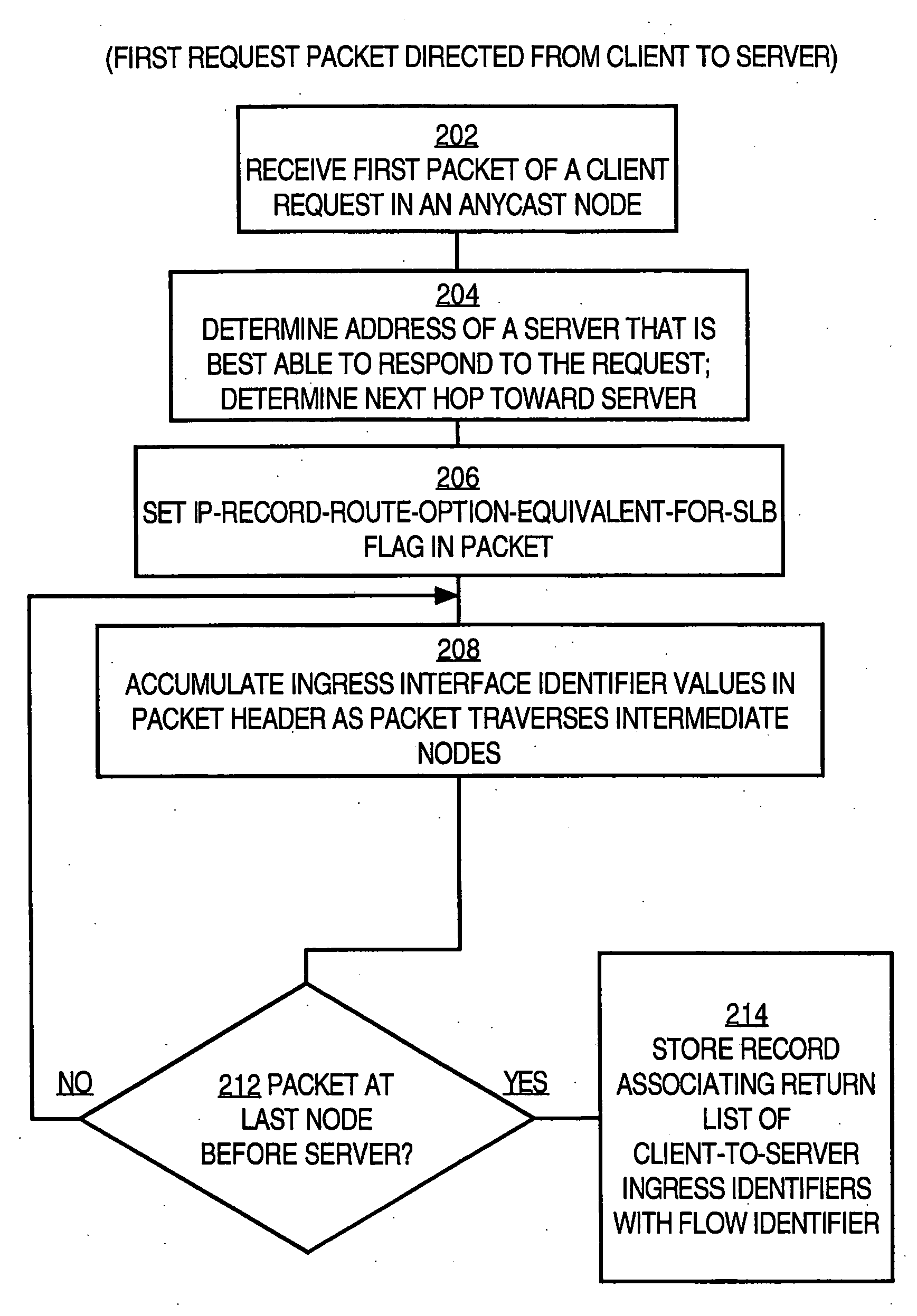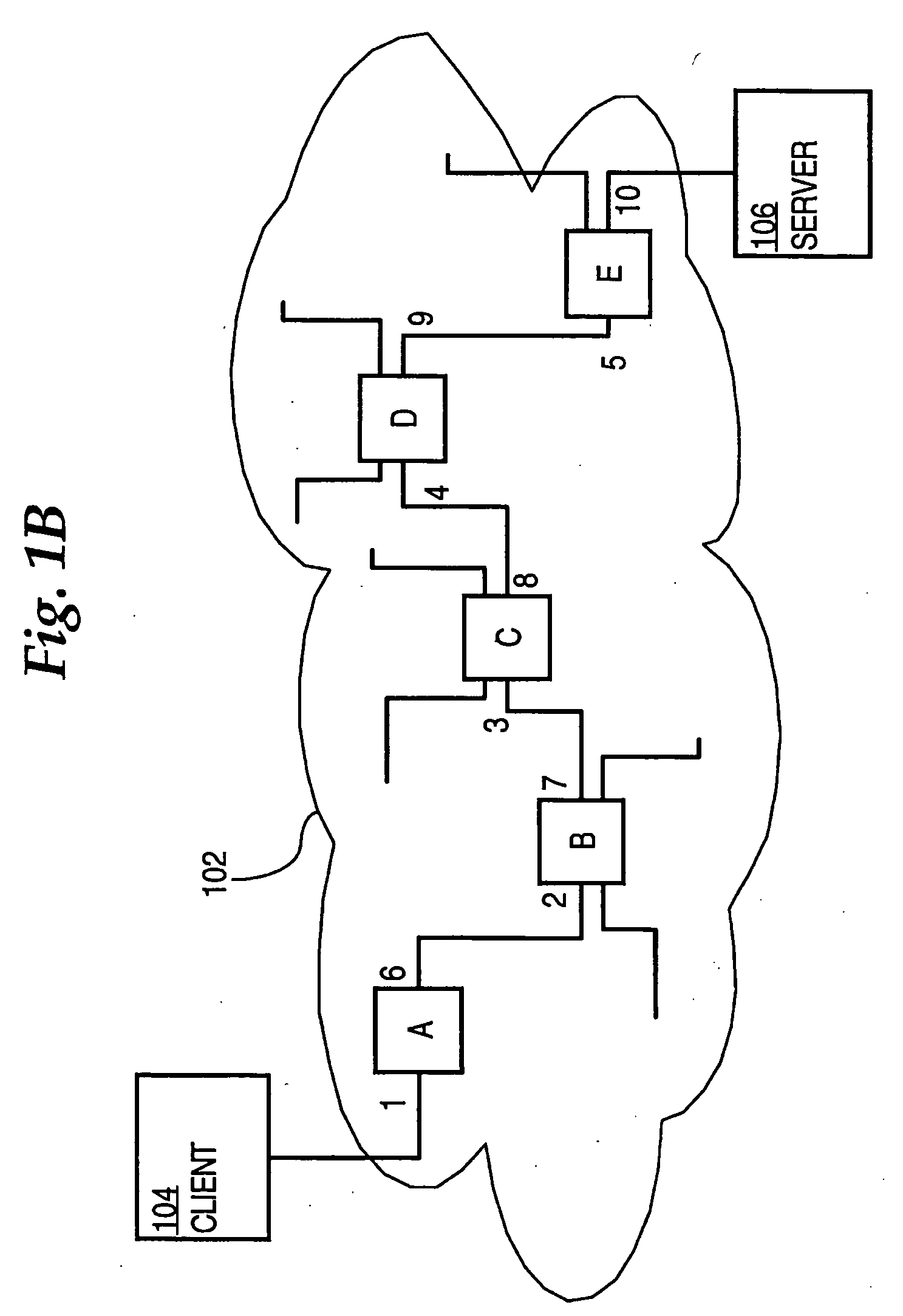Method providing server affinity and client stickiness in a server load balancing device without TCP termination and without keeping flow states
a load balancing device and client technology, applied in the field of data processing, can solve the problems of increasing latency from the client's perspective, inefficient past approach, and many hops required
- Summary
- Abstract
- Description
- Claims
- Application Information
AI Technical Summary
Benefits of technology
Problems solved by technology
Method used
Image
Examples
Embodiment Construction
[0054] A method and apparatus for routing data to a load-balanced server is described. In the following description, for the purposes of explanation, numerous specific details are set forth in order to provide a thorough understanding of the present invention. It will be apparent, however, to one skilled in the art that the present invention may be practiced without these specific details. In other instances, well-known structures and devices are shown in block diagram form in order to avoid unnecessarily obscuring the present invention.
[0055] The description herein is provided in sections organized as follows: [0056] 1.0 Overview [0057] 1.1 Functional Overview [0058] 1.2 Network Context [0059] 2.0 Server Load Balancing Approach Using “IP-RECORD-ROUTE-OPTION” And “IP-STRICT-ROUTE-OPTION”[0060] 2.1 General Process Flow [0061] 2.2 Processing With Identical Paths In Both Directions [0062] 3.0 Server Load Balancing Approach Using MPLS [0063] 3.1 General Process Flow [0064] 3.2 Control ...
PUM
 Login to View More
Login to View More Abstract
Description
Claims
Application Information
 Login to View More
Login to View More - R&D
- Intellectual Property
- Life Sciences
- Materials
- Tech Scout
- Unparalleled Data Quality
- Higher Quality Content
- 60% Fewer Hallucinations
Browse by: Latest US Patents, China's latest patents, Technical Efficacy Thesaurus, Application Domain, Technology Topic, Popular Technical Reports.
© 2025 PatSnap. All rights reserved.Legal|Privacy policy|Modern Slavery Act Transparency Statement|Sitemap|About US| Contact US: help@patsnap.com



